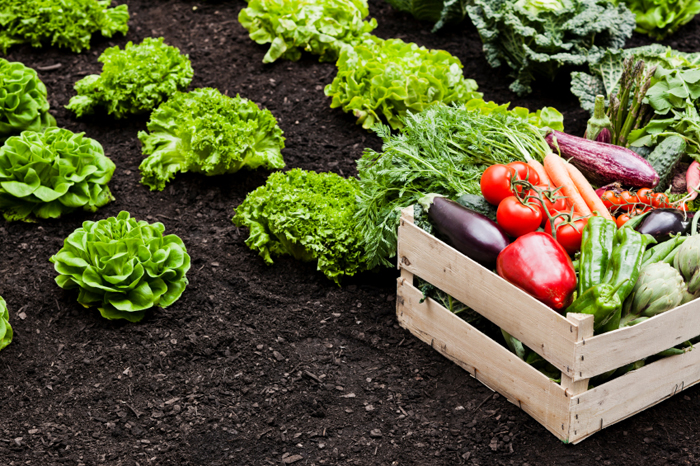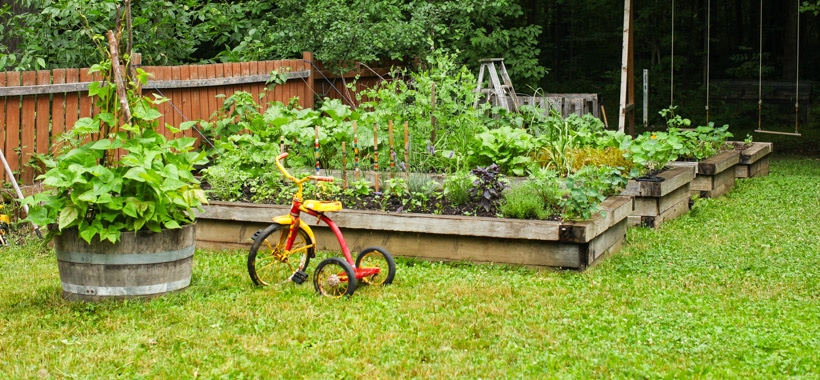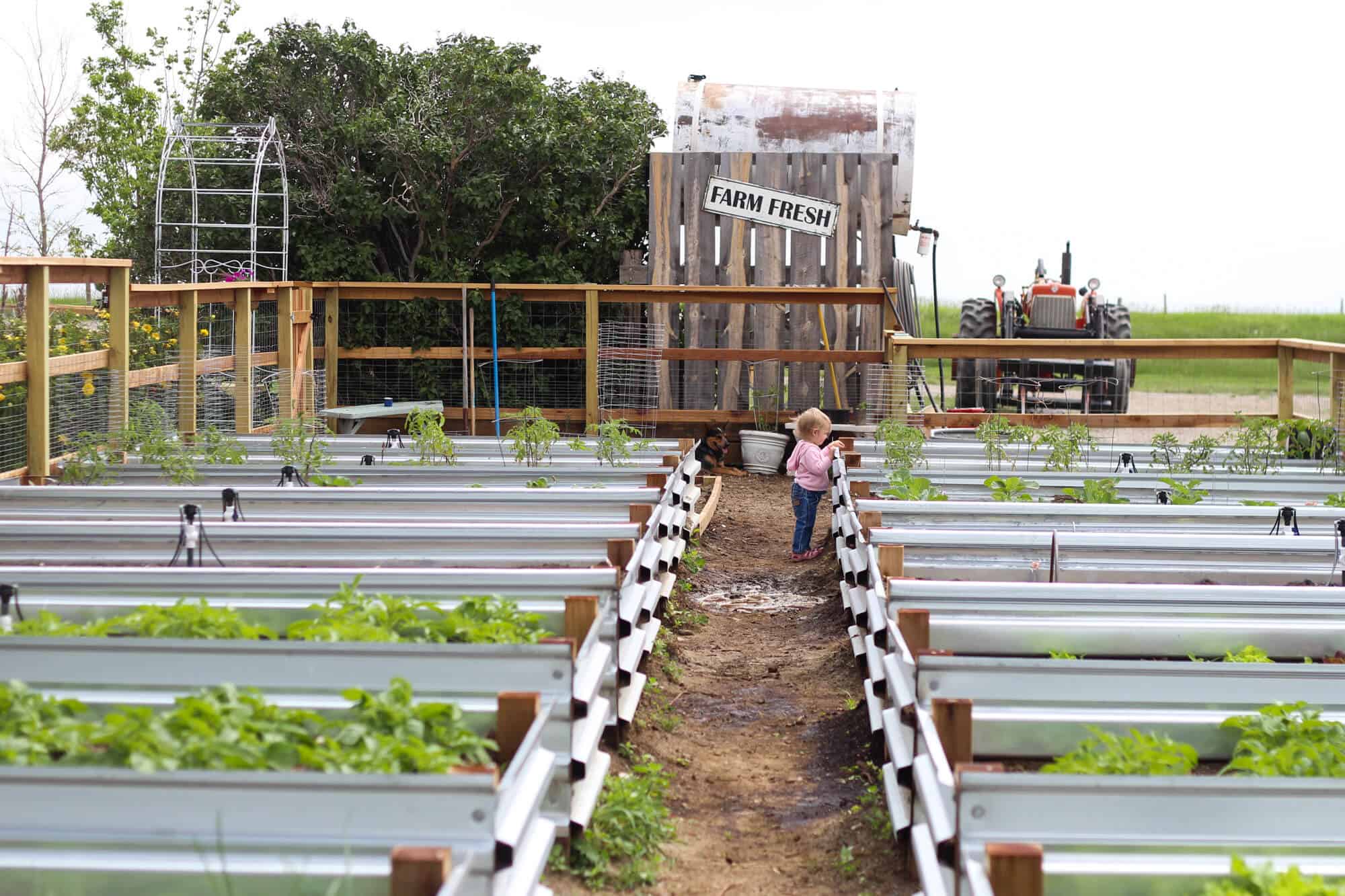Watering and Soil Management Tips for Homestead Gardening
Reveal the Tricks to Developing a Efficient and beautiful Gardening Space
Developing a lovely and effective horticulture space is not merely an issue of planting vegetables and flowers; it requires a calculated method that incorporates different critical elements. From picking the right place based on sunshine and soil type to attentively creating your layout and choosing suitable plants, each decision plays a pivotal function in the success of your yard.
Choosing the Right Location
Choosing the optimal location for your yard is essential to its success and total visual charm. The initial step in this process involves assessing sunshine exposure, as a lot of plants require a minimum of 6 hours of direct sunlight daily (Homestead Gardening). A south-facing yard normally obtains one of the most light, while shaded areas can hinder growth and blooming
Furthermore, take into consideration soil top quality and drainage. Well-draining soil is vital to stop water logged origins, which can result in plant illness. Carrying out a soil test can supply valuable details relating to pH levels and nutrient content, enabling you to modify the dirt accordingly.
Furthermore, closeness to water resources is an additional element to consider - Homestead Gardening. Having very easy accessibility to a pipe or irrigation system can streamline the watering process and encourage regular plant treatment. Wind defense is additionally essential; positioning your yard near structures, such as wall surfaces or fencings, can shield it from severe winds that might harm fragile plants
Last but not least, think about accessibility for maintenance and harvesting. A well-placed yard enables for convenient accessibility, ensuring that you can quickly have a tendency to your plants without causing excessive anxiety or disruption. Thoughtful area selection lays the foundation for a growing yard.
Selecting Plants Carefully
When picking plants for your yard, it's important to take into consideration factors such as climate, dirt conditions, and individual choices to ensure a effective and unified space. A complete understanding of your neighborhood climate will guide you in choosing plants that flourish in your certain setting. Choosing drought-resistant selections is useful in arid areas, while moisture-loving types might be extra ideal for locations with high rains.
Dirt problems are just as crucial; performing a soil test can expose pH degrees and nutrient material, permitting you to pick plants that will certainly grow. Indigenous plants are often an excellent option, as they are commonly well-adapted to regional soil kinds and call for less upkeep.
Show on your individual preferences-- choosing plants that reverberate with your aesthetic preferences will certainly improve your pleasure and dedication to keeping your garden. By carefully evaluating these elements, you can develop a varied and growing plant selection that elevates your horticulture experience.
Designing Your Yard Design
With an attentively picked plant choice in hand, the next step is to create a garden design that takes full advantage of both appeal and capability. Begin by assessing the readily available space, taking into consideration elements such as sunshine, wind, and color patterns. A well-planned design should integrate different zones, including areas for planting, paths, and perhaps seating.
Beginning with bigger plants or prime focus, such as trees or tall perennials, put tactically to create aesthetic passion. Layer smaller plants in front to boost deepness and appearance. Take into consideration the development routines of your selected plants; taller varieties should be placed at the back or center of beds, while much shorter ones can line the sides.
Integrating paths not just promotes access for maintenance yet also invites expedition. Usage products that enhance the yard's general aesthetic, whether wood, rock, or crushed rock chips.
Additionally, think of seasonal modifications and how your format will look throughout the year. Integrating evergreens alongside seasonal blossoms can guarantee year-round beauty. Inevitably, a well-designed yard design harmonizes the natural beauty of plants with sensible considerations, causing an area that is both welcoming and productive.
Enhancing Dirt Health

To improve dirt wellness, begin by conducting a soil examination to analyze pH degrees, nutrient content, and soil structure. Integrate natural issue such as garden compost, well-rotted manure, or fallen leave mold and mildew to boost dirt framework, water retention, and microbial task.
Mulching is another effective strategy; it not only preserves dampness but likewise suppresses weeds and gradually enhances the soil as it breaks down. Preventing extreme husbandry is important, as it can interfere with dirt framework and damage valuable microorganisms. Rather, embrace no-till or very little tillage methods to keep dirt stability.

Preserving Your Garden Efficiently
A well-kept garden provides pride and productivity, requiring regular focus to make certain that plants grow and the landscape continues to be welcoming. Efficient garden maintenance entails numerous crucial methods that improve the health of your plants and the overall visual of your area.
Routine watering is essential; however, it is important to customize your watering timetable based on the particular demands of your plants and neighborhood climate conditions. Mulching can aid preserve wetness, suppress weeds, and manage soil temperature. In addition, prompt weeding avoids competitors for nutrients and sources, ensuring that your plants grow.
Pruning is one more important job. It urges healthy development, removes dead or diseased branches, and shapes plants to preserve an appealing framework. Additionally, keeping track of for diseases and bugs is essential; early detection and intervention can conserve your plants from substantial damages.
Fertilization needs to be implemented thoughtfully, using natural options whenever possible to advertise lasting dirt wellness. Seasonal tasks such as planting, separating perennials, and preparing for winter months will guarantee your garden continues to be lively year-round. By following these methods diligently, you can cultivate a yard that is both efficient and lovely.
Final Thought
Finally, the development of a beautiful and efficient gardening space calls for careful factor to consider of a number of crucial elements. Choosing an appropriate place with adequate sunshine, picking appropriate plants, developing a visually pleasing layout, improving soil wellness, and making certain routine upkeep are crucial parts. By incorporating these techniques, one can grow his response a flourishing yard that not just improves the landscape yet also promotes eco-friendly equilibrium and sustainability. Such a technique eventually causes a satisfying horticulture experience.
From choosing the right location based on sunshine and soil kind to attentively designing your format and picking suitable plants, each decision plays an essential role in the success of your garden. Well-draining dirt is important to prevent waterlogged roots, which can lead to plant conditions.When choosing plants for your yard, it's essential to consider variables such as click to read more environment, dirt conditions, and personal choices to ensure a effective and unified room. Ultimately, a well-designed garden layout integrates the all-natural beauty of plants see this page with useful considerations, resulting in a space that is both inviting and efficient.
